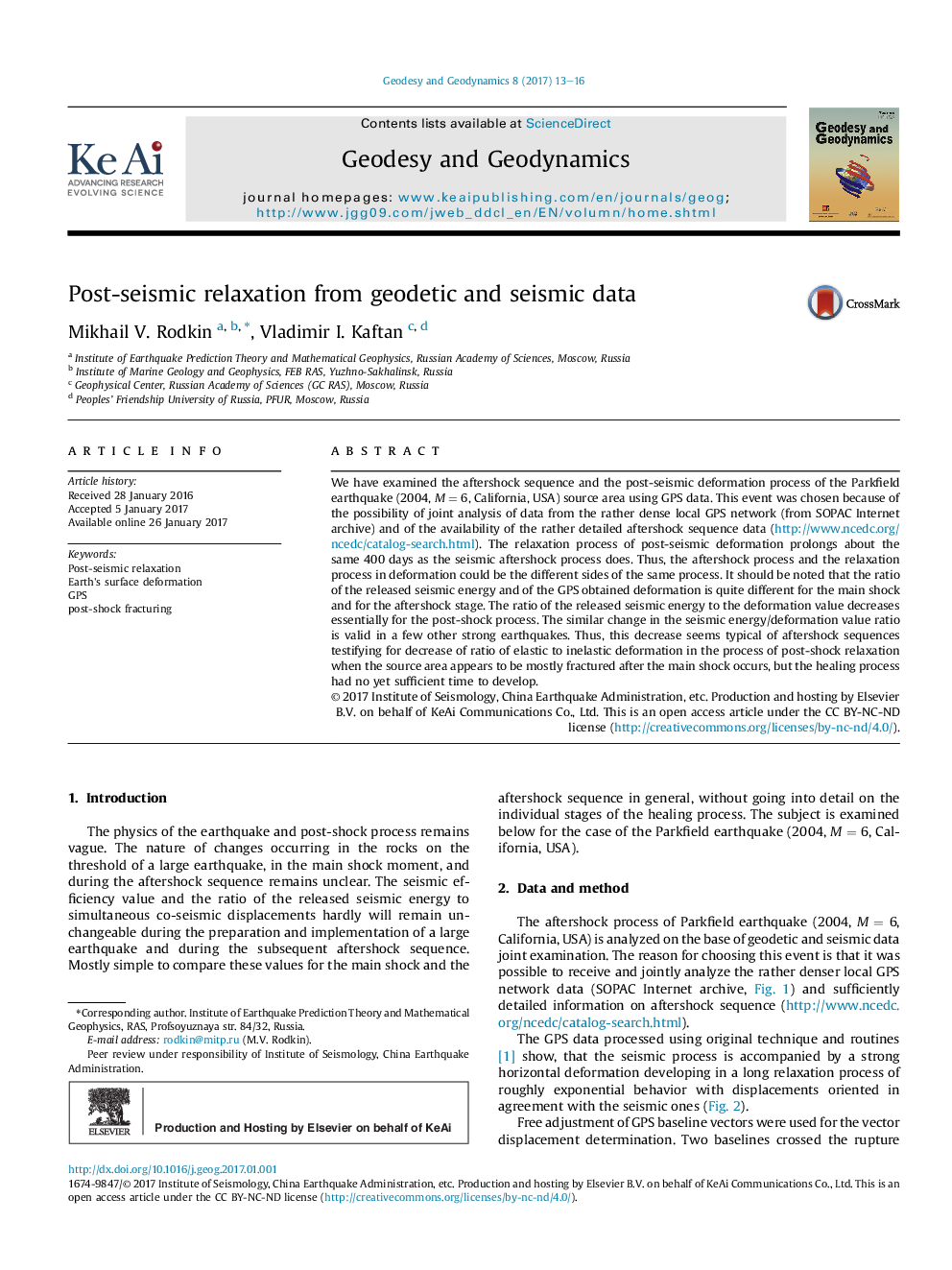| Article ID | Journal | Published Year | Pages | File Type |
|---|---|---|---|---|
| 5780625 | Geodesy and Geodynamics | 2017 | 4 Pages |
Abstract
We have examined the aftershock sequence and the post-seismic deformation process of the Parkfield earthquake (2004, MÂ =Â 6, California, USA) source area using GPS data. This event was chosen because of the possibility of joint analysis of data from the rather dense local GPS network (from SOPAC Internet archive) and of the availability of the rather detailed aftershock sequence data (http://www.ncedc.org/ncedc/catalog-search.html). The relaxation process of post-seismic deformation prolongs about the same 400 days as the seismic aftershock process does. Thus, the aftershock process and the relaxation process in deformation could be the different sides of the same process. It should be noted that the ratio of the released seismic energy and of the GPS obtained deformation is quite different for the main shock and for the aftershock stage. The ratio of the released seismic energy to the deformation value decreases essentially for the post-shock process. The similar change in the seismic energy/deformation value ratio is valid in a few other strong earthquakes. Thus, this decrease seems typical of aftershock sequences testifying for decrease of ratio of elastic to inelastic deformation in the process of post-shock relaxation when the source area appears to be mostly fractured after the main shock occurs, but the healing process had no yet sufficient time to develop.
Keywords
Related Topics
Physical Sciences and Engineering
Earth and Planetary Sciences
Earth-Surface Processes
Authors
Mikhail V. Rodkin, Vladimir I. Kaftan,
